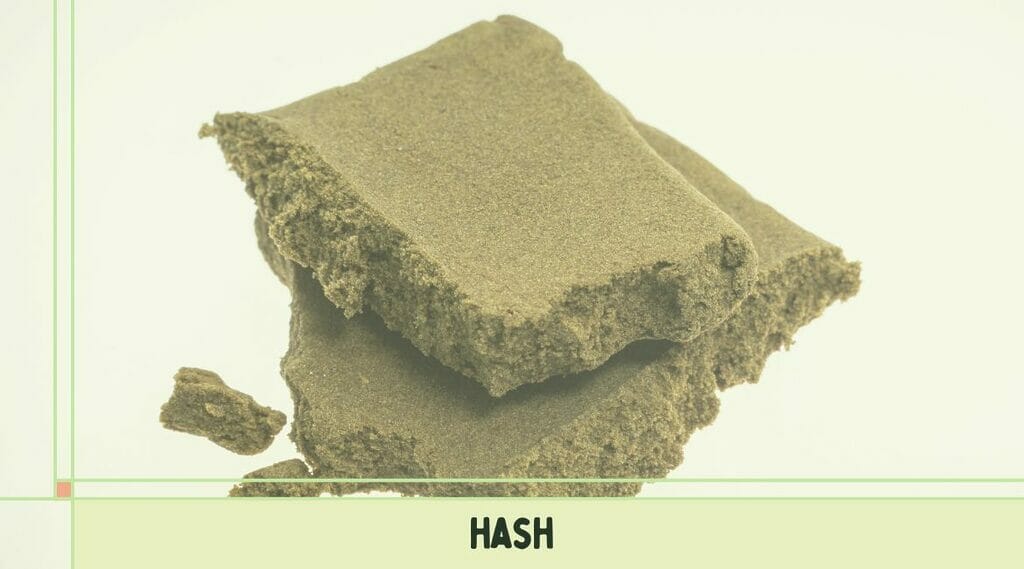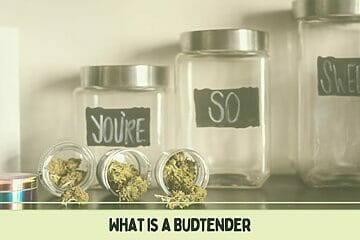You may have heard of hash, but you may not know exactly what it is. In this blog post, we will give you a quick overview of hash so that you can better understand this popular product.
Hash is derived from the Arabic word “hashish” which means “grass”. The word hashish comes from the Arabic verb حشيش which means “to smoke (something)”.
Hashish is a concentrated form of cannabis that is made from the compressed resin of the cannabis plant. It can be smoked, vaporized, or eaten.
Hashish is often mixed with tobacco, herbs, or other psychoactive substances that are smoked in a “joint.” In some countries, it can be mixed with honey to make what is called hash honey oil.
Table of Contents
Hashish History
Hash was used in many ways throughout history, but it was most commonly smoked as an intoxicant. It was likely first introduced to Europe by Arab traders who brought it back from their travels to India and Persia.
How Is Hash Made?
Hash is made by separating the resin from the leaves and flowers of the cannabis plants. The cannabis resin is then pressed into a soft block. Hash can also be made by sifting the dried leaves and flowers of the cannabis plant through a screen. The resulting powder is then pressed into a block.
Hash typically has a higher concentration of THC than other forms of cannabis. THC is the main psychoactive component of cannabis. This means that hash can produce strong mental and physical effects. The effects of hash vary depending on the strain and concentration of THC.
Types of Hashish
Afghani Hash
Afghani hash is a type of hashish that is made from the resin of the Cannabis indica plant. It originates from the Hindu Kush region of Afghanistan and is one of the most popular types of hashish in the world. Afghani hash typically has a dark brown color and a strong, earthy flavor.
Moroccan Hash
Moroccan hash is a type of hashish that is made from the resin of the Cannabis indica plant. It originates from the Rif Mountains of Morocco and is one of the most popular types of hashish in the world. Moroccan hash typically has a light brown color and a mild, earthy flavor.
Lebanese Hash
Lebanese hash is a type of hashish that is made from the resin of the Cannabis indica plant. It originates from the Bekaa Valley of Lebanon and is one of the most popular types of hashish in the world. Lebanese hash typically has a dark brown color and a strong, earthy flavor.
Indian Hash
Indian hash is a type of hashish that is made from the resin of the Cannabis indica plant. It originates from India and is one of the most popular types of hashish in the world. Indian hash typically has a dark brown color and a strong, earthy flavor.
Pakistani Hash
Pakistani hash is a type of hashish that is made from the resin of the Cannabis indica plant. It originates from Pakistan and is one of the most popular types of hashish in the world. Pakistani hash typically has a dark brown color and a strong, earthy flavor.
Benefits of Hash
Hash has been used for centuries for its medicinal properties. Modern science has begun to confirm some of these ancient claims. For example, research has shown that hash can be effective in treating pain, inflammation, anxiety, and seizures. Some people also use hash to improve their appetite or relieve nausea.
In recent years, there has been an increase in the availability of medical cannabis products containing CBD. CBD is a non-psychoactive component of cannabis that has a wide range of potential health benefits. CBD-rich hash products are becoming increasingly popular as people look for natural ways to treat their conditions.
How to Smoke Hash
When smoking hash, it is important to use a pipe or bong that has a screen, as the trichomes can clog up your smoking device. If using a pipe or bong without a screen, you can place the hash on top of a piece of tobacco or another herb. You can also vaporize hash using a vape pen or other vaporizer designed for cannabis concentrates. Hash can also be added to joints or blunts before smoking them.
Hash Oil
Hash oil is a concentrated form of cannabis. Hash oil can be extremely potent, containing high levels of THC. As a result, it can produce strong psychoactive effects, including feelings of euphoria and relaxation. Some users report that hash oil can also help to relieve pain and anxiety. Hash oil is typically smoked or vaporized, but it can also be used to make edibles. While hash oil is not legal in all states, its popularity continues to grow in both the medical and recreational marijuana communities.
What’s the difference between hash and other cannabis concentrates?
Kief vs Hash
Kief and hash are both concentrated forms of cannabis. Kief is made up of the trichomes, or resin glands, that cover the cannabis plant. These tiny glands are packed with cannabinoids and terpenes, which give cannabis its unique flavor and aroma. Hash is made by separating the trichomes from the plant material and then pressing them into a solid block. Hash typically has a higher concentration of THC than kief. However, both forms of concentrated cannabis can be used in a variety of ways, such as smoking, vaporizing, or cooking. Kief and hash can also be added to regular cannabis flowers to increase their potency. When choosing between kief and hash, it ultimately comes down to personal preference. Some people prefer the intense high that hash provides, while others find that kief offers a more mellow experience. Ultimately, there is no right or wrong answer – it all depends on what you’re looking for in your cannabis experience.
Hash vs Weed
For many people, the terms “hash” and “weed” are interchangeable. However, there are actually some significant differences between these two forms of cannabis. Hash is made from the resin of the cannabis plant, which contains high levels of THC. Weed, on the other hand, is made from the dried leaves and flowers of the plant. While both hash and weed can be used to get high, the hash is generally more potent. As a result, it is often recommended for experienced users only. In addition, hash typically has a stronger flavor than weed, which can be either positive or negative depending on your preferences. Whether you prefer hash or weed is ultimately a matter of personal preference. However, it’s important to be aware of the differences between these two popular forms of cannabis.
The Risks Associated with Hash
- Short-Term Risks
There are a number of short-term risks associated with hash use, including:
- impaired coordination and balance
- slowed reaction time
- distorted perception (sights, sounds, time, touch)
- impaired judgment and decision-making
- paranoia
- anxiety
- panic attacks
- psychosis
- sore throat
- panic
- increased appetite
- Alterations in heart rate and blood pressure
- Long-Term Risks
In addition to the short-term risks, there are also a number of long-term risks associated with hash use, including:
- addiction
- cognitive impairment
- memory problems
- difficulty concentrating
- difficulty learning new information
- schizophrenia
Hashish Addiction
Hashish addiction is a real problem for many people who use this drug, as it can lead to physical and psychological dependence. The most common symptom of hash addiction is an intense craving for the drug. Other symptoms include tolerance (needing more and more hash to achieve the desired effect), withdrawal (experiencing unpleasant symptoms when not using hash), and compulsive use (using hash even though it is causing problems in your life). If you or someone you know is struggling with hash addiction, there are treatment options available. With professional help, it is possible to break the cycle of addiction and regain control of your life.
Conclusion – Hash
In conclusion, the hash is a type of cannabis that is made from the resin of the plant. It can be consumed by smoking or eating and can be used for medical or recreational purposes. Hash typically has a higher concentration of THC than other forms of cannabis, which means it can produce strong mental and physical effects. There are some risks associated with consuming Hash, such as anxiety and paranoia, but there are also many potential benefits, such as pain relief and reduced inflammation.
What is the effect of drinking alcohol when you use hash?
Alcohol intensifies the symptoms of hash use, which include hallucinations and anxiety.
What is bubble hash?
Bubble hash, also known as ice water hash, is a type of cannabis concentrate that is made using a variety of methods. However, the most common method involves soaking cannabis in cold water and then filtering it through a series of progressively finer screens. As the cannabis is filtered, trichomes (the tiny resin glands that contain cannabinoids) break off and are collected. The resulting product is a sticky, oily substance that can be pressed into balls or hashes. Bubble hash is typically very potent, because it contains a high concentration of THC. It can be smoked on its own or used to make other cannabis products, such as edibles or tinctures.
What is the price of hashish?
The price of hashish varies depending on the quality and quantity purchased. For example, a gram of hashish may cost $20 if it is low quality or $60 if it is high quality. The price also depends on the country of origin. Hashish from Morocco, for example, is typically more expensive than hashish from Nepal. Finally, the price may also be affected by local demand and supply. If there is a lot of hashish available in a particular area, the price will be lower than if there is limited supply. Overall, the price of hashish can range from $20 to $60 per gram, depending on the factors mentioned above.



